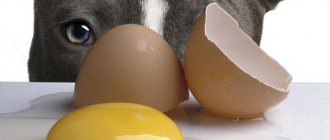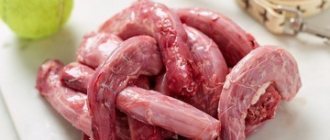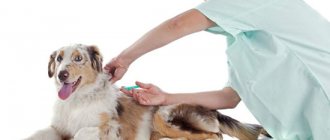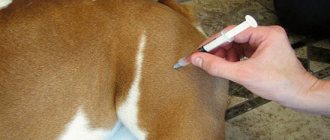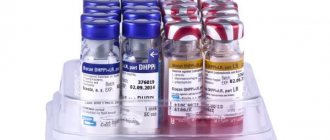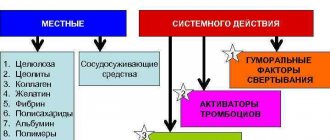It is generally accepted that a dog’s diet should not be particularly varied, and what is most important is its balance and benefits. But in practice, many four-legged dogs turn out to be real gourmets, and the monotony of food causes boredom in dogs. Some people adore vegetables, others fruits, for others there is nothing tastier than bread crumbs. Unfortunately, not all “treats” are suitable for feeding dogs, and some turn out to be truly harmful. For example, among dog breeders there is ongoing debate about whether dogs can eat grapes, and despite the fact that experts claim that it is dangerous for the animal’s body, this has not yet been confirmed.
About the beneficial and harmful properties of grapes
This statement will surprise many, because doctors everywhere talk about the benefits of grapes. It has a beneficial effect on the entire human body: fiber improves digestion, and microelements, including potassium, calcium, phosphorus, magnesium, sodium, iron, on the nervous system. The berries contain one of the plant estrogens - resveratrol, which helps reduce cholesterol levels in the blood and relieve vascular inflammation.
Phenolic compounds - caffeic acid, myrcetin and quercetin - protect the body from the development of cancer cells, and the seeds contain natural oils and vitamins - A, E, K and others. In total, grapes contain more than 300 compounds that have beneficial properties for the body:
- bactericidal;
- tonic;
- antioxidant;
- radioprotective;
- neurostimulating.
For humans, grapes are a whole storehouse of useful substances, then why are veterinarians so categorical in their statement that dogs should not eat grapes?
Allowed vegetables
We present to your attention a list of healthy vegetables that you can give your dog:
- Broccoli. This vegetable will bring particular benefits to the animal's body. However, it should not make up more than 10% of the dog’s diet, so as not to cause irritation to the gastrointestinal tract.
- Pumpkin. Including this vegetable in your animal's food, raw or canned, will saturate its body with fiber and vitamin A. Pumpkin will also benefit your dog if it has digestive problems.
- Legumes. They allow you to saturate the animal’s body with iron and vitamins. However, legumes are best added to the diet without salt, as for the canned product. Consuming them fresh and in large quantities can cause nausea, vomiting and diarrhea due to the vegetable proteins they contain. Therefore, it is best to prepare various dishes from legumes, and only then feed them to the dog. It is allowed to include beans in the diet.
- Carrot. Vegetables are low-calorie foods. At the same time, carrots contain a large amount of fiber and vitamins. Raw carrots can have a positive effect on the health of your pet's teeth.
All of these vegetables, when included in the diet in the right quantities, can provide invaluable health benefits to dogs.
Four ingredients, and joy for the whole day: during the holidays I bake coconut crumpets
Instead of meatballs, I now cook cabbage and meat bombs with cheese and potatoes
Exquisite fish and side dish at the same time: dorado on a potato bed for Christmas
What is the danger of grapes?
Many pet owners believe that the more varied their pet’s diet, the healthier it is and focus on what is healthy and tasty for them. However, a dog’s body is structured somewhat differently, and what is good for a person can be fatal for an animal.
The alarm was first sounded in the late 1980s by scientists from the Animal Toxicology Center at the ASPCA (American Society for the Prevention of Cruelty to Animals). They were amazed by the numbers: over two years, almost 150 cases of grape poisoning in dogs were recorded, with 7 animals dying, and half of those poisoned were diagnosed with severe kidney failure. Statistics said that gender, age, breed or health status of animals did not influence the risk of developing intoxication.
Serious scientific research in this direction has led to the conclusion that grapes are toxic to domestic animals, but the exact mechanism of poisoning has not yet been clarified.
There are assumptions, and research is currently underway in this direction, that the “culprit” of intoxication is a mycotoxin - a natural substance that can be formed in many food products during storage under the influence of microscopic fungi that develop in them. However, in many cases of poisoning studied, no traces of mycotoxin were found in grapes. Therefore, until now, the dangerous component of grapes has not been clarified.
Studies have shown that in most cases of grape poisoning, dogs develop severe renal failure - proximal tubular necrosis of the organ. This is an acute disease with necrotic damage to the tubular epithelium, which leads to acute renal failure. Up to 25% of the blood passes through the kidneys, and the epithelial cells of the renal tubules are extremely sensitive to toxins that circulate in the blood. They perform a transport function that requires large amounts of energy. Toxins disrupt the metabolism of epithelial cells.
During research, it was suggested that the poisoning was caused by seeds, but the reaction of the dog’s body to seedless grape varieties was similar. It is more likely that intoxication is caused not by a single element of the berry composition, but by a combination of them. While they are harmless in microdoses, their combination causes severe poisoning in the dog.
And the digestive system is the first to suffer. After eating grapes, the dog begins to vomit violently; undigested remains of the berries can be found in the vomit. Vomiting is accompanied by diarrhea. The kidneys try to neutralize and remove toxins from the body, but the increased load on them causes autointoxication syndrome after some time. Metabolic products accumulate in the blood and metabolic processes in the body are disrupted.
Important!
Not only fresh berries are dangerous for dogs, but also raisins. Even a small amount - 3-4 raisins - can be deadly.
Why you need to be careful when giving your dog different foods
Every owner thinks about proper feeding of their pet. After all, he wants to feed the animal only healthy food that will prolong its health and life.
Many owners feed their dogs from their table without seeing any harm in it. In their opinion, such food is tasty and prepared from healthy and high-quality products. This approach is wrong, because the food needs of humans and animals are completely different.
Therefore, not all food is equally beneficial for both the dog and its owner. The following is a list of products that are allowed to be given to an animal, and completely prohibited, due to the negative impact on health.
Signs of poisoning
It is difficult to determine intoxication immediately; at least several hours must pass for the first symptoms of poisoning to appear. And every minute can count. Therefore, the animal’s reaction should be observed if there is even the slightest suspicion that it has eaten sweet berries. A slight change in the pet’s condition or behavior is a reason to immediately go to the veterinary clinic.
Grape intoxication is manifested by the following symptoms:
- vomiting, in the vomit there are remains of undigested berries;
- frequent profuse diarrhea;
- lack of salivation or, conversely, increased salivation;
- refusal of food and water;
- lethargy, apathy;
- decrease in body temperature.
The walls of the peritoneum become toned, this can be determined by palpation. The abdomen is painful; when touched, the dog begins to whine. Toxic shock develops up to two days; if the pet is not helped as soon as possible, it will die.
Important!
A lethal dose for a dog weighing up to 20 kg is 8-10 berries; poisoning can be caused by just 3-4 grapes eaten. For a small breed dog this dose is much less.
Death is a consequence of the development of acute renal failure. Poisoning is caused by decay products of internal organs and stagnation of urine. The kidneys cannot cope with the increased load, which leads to irreversible damage to the organs. If you seek veterinary help within 12-18 hours of poisoning, the survival rate is 100%. But hospital treatment will be required.
What to do to save your pet
At the first signs of poisoning, contact a veterinarian. Before his arrival or arrival at the clinic, you need to provide the dog with plenty of fluids. If time is not lost, then the chances of successful recovery are high. A competent specialist will probe the abdominal cavity and do a blood test. A catheter will appear on the dog's paw for intravenous administration of saline solutions. In addition, medications will be used to stimulate the dog's urine production. Therapy can then be given to maintain normal kidney and liver function, if necessary.
Come up with alternative safe treats
To avoid possible health problems, you should remember a simple rule - grapes should not be given to dogs. Prompt veterinary care will save the life and health of your pet, but such situations are best avoided. There are many other healthy and safe berries you can treat your pet with, such as strawberries.
Symptoms of grape poisoning in dogs
- vomit;
- diarrhea;
- loss of appetite;
- weakness;
- decreased activity to the point of lethargy;
- dehydration;
- oliguria (decreased amount of urine excreted);
- anuria (complete cessation of urine output);
- formation of ulcerations in the mouth;
- convulsions;
- coma.
If your dog exhibits these symptoms and you don't know for sure whether he ate grapes, pay attention to the contents of his feces or vomit. You may find undigested pieces of fruit, grape seeds or skins in them.
Fruits that can be given to dogs
The safest and most affordable fruit is an unpeeled green apple , which helps improve digestion and is a source of vitamin C. A large dog can be given half a medium apple, and a small dog a couple of slices.
Papaya is safe and healthy for dogs as long as it is peeled and seeded. Papaya is not recommended for animals with diabetes. The fruit helps improve digestion and treat indigestion. Some pet stores even have papaya enzymes in tablet form that they give as a vitamin supplement. Overfeeding papaya leads to constipation.
Kiwi can be given in very small quantities; it is acceptable to include non-sweet pears in the diet.
Bananas are a subject of debate among dog breeders, some are in favor and others are against. In terms of benefits, unripe bananas are generally not harmful in small quantities. But you shouldn’t give them often, especially overripe ones. Large dogs can be given half a banana 1-2 times a week, small dogs - several small pieces.
Melons are safe for dogs, but they don’t bring any tangible benefits, but they do help quench their thirst. Overfeeding melon has a laxative effect.
Persimmon is a favorite treat for many animals, but it is better to avoid this fruit, because... persimmon causes stomach upset. It is permissible to give persimmons in small quantities, but only without seeds.
There are no special restrictions among berries; depending on the taste preferences of a particular dog, you can give currants, raspberries, strawberries, hawthorns, gooseberries, cranberries, blueberries, and watermelon. It is not recommended to give blackberries, since their benefits are questionable.
If we talk about berries, then a few things are enough, again the quantity depends on the size of the fruit and the animal itself. For example, if there are currants, then 5-6 berries are enough, and if strawberries are 5 cm in size, then one berry is enough.
Dried fruits can be given to dried apricots. But raisins and prunes are not recommended.
Unhealthy food
There is food that is completely unsuitable for dogs and can cause irreparable harm to its health:
- Chocolate. Owners should never feed their pet this treat. Chocolate is extremely toxic to dogs due to the methylxanthines it contains. If consumed in large quantities, the animal may experience vomiting, diarrhea, heart rhythm disturbances, seizures and even death.
- Grapes and raisins. Although they are tasty and healthy for humans, they can cause kidney failure in dogs.
- Onion. The vegetable can make your dog sick by negatively affecting red blood cells.
- Avocado. The leaves, fruits, seeds and bark of the unusual fruit contain the toxin persin, which causes stomach upset and difficulty breathing.
- Alcohol. Even a small amount of it can make your dog drunk. As a result, vomiting, convulsions and even death can occur.
Dog owners should be careful about including different foods in their dog's diet. After all, junk food can lead to serious health consequences, and sometimes even death.
Acute kidney failure has many causes.
Kidney infection or cancer, severe dehydration, bladder stones, various serious illnesses and, of course, toxins are just a few of the reasons. This is why it can sometimes be difficult to determine the cause of AKI. However, it is important for the veterinarian to establish the cause, because sometimes it is necessary to treat several at once.
Kidney cells work hard, so they need a lot of energy and blood flow. These cells are very sensitive to damage if the bloodstream is exposed to any of the above causes. When these important cells begin to die, they lose their ability to function: they lose the ability to regulate water, remove toxins, and maintain proper electrolyte balance. We are lucky that the kidneys have their own “reserves”. This means that the kidneys can afford to lose about half of their cells. That is, if about 50% of the cells die, the remaining part can make up for their losses. Once a kidney loses more than 50% of its cells, the animal experiences kidney failure. If cell loss occurs quickly, the dog has an acute form of the disease.
Other healthy foods
In addition to meat and vegetables, a dog’s diet may include the following products:
- Peanut butter. It is allowed to give the animal 1 tbsp. a spoonful of the product without salt. The oil should not contain xylitol. It is an excellent source of protein and healthy fats for dogs.
- Yogurt. The product without additives is a special treat for an animal if it has digestive problems. Yogurt contains protein and calcium, which has a positive effect on the dog's body.
- Oatmeal. Porridge is an excellent source of fiber. If for some reason a dog suffers from intestinal dysfunction, then oatmeal is the most beneficial product for it.
- Cottage cheese. The product contains calcium and protein. This allows it to be used as a useful addition to the animal’s diet. However, it should not be given to dogs if they have problems digesting dairy products.
- Eggs. The product contains not only protein, but also fat. For this reason, eggs should not be included in large quantities in your dog’s diet. Also, veterinarians do not recommend including the product in its diet in raw or undercooked form. This puts the animal at risk of contracting dangerous bacteria such as salmonella.
When including such food in the diet, the dog owner must take into account its quantity and method of preparation. Only in this case will it bring only benefits to the animal’s body.
A scrub with sage, honey and oats will moisturize your skin in winter. 3 homemade scrub recipes
Salmon in an amazing peach glaze: I’ll serve it for the New Year
Screenings of The Nutcracker at the Mariinsky Theater will begin on Christmas Day
